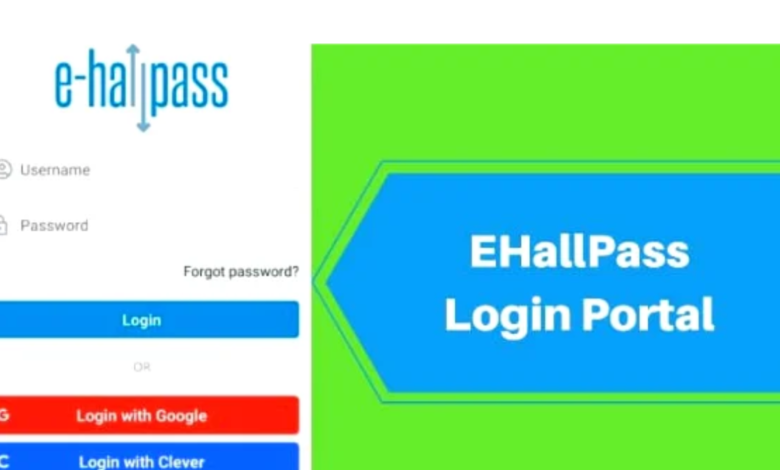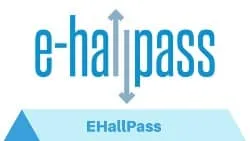Everything You Need to Know About eHall Pass Login

Navigating the ehall pass login complexities of school management systems can often be a daunting task, but tools like eHall Pass have revolutionized the way students and staff manage their daily activities. eHall Pass, a digital hall pass system, has become increasingly popular for its efficiency and user-friendliness. At the heart of this system is the eHall Pass login, a crucial gateway to accessing various features and functionalities. In this comprehensive guide, we will explore everything you need to know about eHall Pass login, including its benefits, troubleshooting tips, and much more. So, buckle up as we delve into the world of eHall Pass!
What is eHall Pass?

ehall pass login is an innovative digital solution designed to streamline the management of hall passes within educational institutions. Traditionally, hall passes were physical documents or notes that students carried to obtain permission to leave their classrooms or move between areas within the school. However, eHall Pass replaces this outdated system with a modern, digital approach that enhances both efficiency and security.
The platform offers a variety of features that cater to the needs of students, teachers, and administrative staff. With ehall pass login, students can request passes electronically, teachers can approve or deny requests in real-time, and administrators can monitor the movement of students throughout the school. This system not only simplifies the process but also provides valuable insights and data to improve overall school management.
The eHall Pass Login Process
To access the eHall Pass system, users need to go through the eHall Pass login process. This process is designed to ensure that only authorized individuals can access the system, maintaining the integrity and security of the platform. Here’s a step-by-step breakdown of how the eHall Pass login works:
- Accessing the Login Page: The first step in the login process is to navigate to the eHall Pass login page. This can typically be done by entering the designated URL into a web browser or through a link provided by the school. The login page is the gateway to accessing all the functionalities of the eHall Pass system.
- Entering Credentials: Once on the ehall pass login page, users will be prompted to enter their credentials. This usually includes a username and password. For students and staff, these credentials are often provided by the school and are unique to each user. It’s crucial to enter the correct information to ensure a successful login.
- Authentication and Access: After entering the credentials, the system will authenticate the user’s information. If the credentials are correct, the user will gain access to the eHall Pass dashboard. If there are any issues with the credentials or authentication, the system will prompt the user to try again or contact support for assistance.
Benefits of Using eHall Pass
The adoption of ehall pass login in educational institutions comes with a plethora of benefits that enhance the overall experience for students, teachers, and administrators. Let’s explore some of the key advantages of using eHall Pass:
Streamlined Process
One of the most significant benefits of ehall pass login is the streamlined process it offers. Traditional hall passes can be cumbersome, involving physical paperwork and manual tracking. eHall Pass simplifies this by allowing students to request passes electronically, which can be quickly approved or denied by teachers. This efficiency reduces wait times and minimizes disruptions in the classroom.
Real-Time Tracking
ehall pass login provides real-time tracking of student movements within the school. This feature allows administrators to monitor where students are at any given time, enhancing security and ensuring that students are where they are supposed to be. Real-time tracking also aids in identifying patterns and addressing any issues related to student movement.
Improved Data Management
The digital nature of ehall pass login means that data management is significantly improved. The system automatically logs and stores data related to pass requests, approvals, and student movements. This data can be easily accessed and analyzed to gain insights into student behavior and to make informed decisions about school management.
Common Issues with eHall Pass Login and How to Resolve Them
While ehall pass login offers a user-friendly experience, users may occasionally encounter issues with the login process. Here are some common problems and their solutions:
Forgotten Passwords
A frequent issue users face is forgetting their password. If you’ve forgotten your eHall Pass password, the system typically provides a “Forgot Password” option on the login page. Clicking this option will guide you through the process of resetting your password. You may need to provide additional information or verify your identity before creating a new password.
Incorrect Credentials
Another common issue is entering incorrect credentials. Ensure that you are using the correct username and password provided by your school. Double-check for any typos or errors in the credentials you enter. If you continue to experience issues, contact your school’s IT department or eHall Pass support for assistance.
System Errors
Occasionally, users may encounter system errors or glitches during the login process. These issues can be due to maintenance activities, server problems, or other technical difficulties. If you experience such errors, try refreshing the page or accessing the system from a different device. If the problem persists, reach out to eHall Pass support for further assistance.
Enhancing Security with eHall Pass
Security is a crucial aspect of any digital system, and eHall Pass is designed with several features to ensure the safety and privacy of its users. Here’s how eHall Pass enhances security:
User Authentication
eHall Pass employs robust user authentication methods to ensure that only authorized individuals can access the system. This includes secure login processes and the use of unique credentials for each user. Authentication helps prevent unauthorized access and protects sensitive information within the system.
Data Encryption
To safeguard user data, eHall Pass utilizes encryption technologies. Data encryption ensures that information transmitted between users and the system is secure and cannot be easily intercepted or accessed by unauthorized parties. This adds an extra layer of protection to sensitive data.
Access Controls
eHall Pass allows administrators to set access controls and permissions based on user roles. This means that different users—such as students, teachers, and administrators—have varying levels of access to the system’s features. Access controls help prevent misuse and ensure that users can only access the information and functionalities relevant to their roles.
Integrating eHall Pass with School Systems
Integrating eHall Pass with existing school systems can further enhance its effectiveness and streamline administrative processes. Here’s how eHall Pass can be integrated with other school systems:
Student Information Systems
eHall Pass can be integrated with student information systems (SIS) to synchronize student data and ensure accuracy. This integration allows for seamless updates of student information, such as class schedules and attendance records, which can be used to inform pass requests and approvals.
Learning Management Systems
Integrating eHall Pass with learning management systems (LMS) can enhance the overall educational experience. For example, teachers can use the LMS to track student progress and coordinate with eHall Pass to manage hall pass requests related to specific assignments or activities.
School Management Systems
Integration with broader school management systems can streamline administrative tasks and improve overall efficiency. By connecting eHall Pass with other management tools, schools can create a cohesive system that manages various aspects of school operations, from scheduling to student tracking.
Future Developments and Updates for eHall Pass
As technology continues to evolve, eHall Pass is likely to see further developments and updates that enhance its functionality and user experience. Here’s what the future might hold for eHall Pass:
Enhanced User Interfaces
Future updates may include improvements to the user interface, making it even more intuitive and user-friendly. Enhanced interfaces can provide a better experience for students, teachers, and administrators, making it easier to navigate the system and access its features.
Advanced Analytics
As schools seek more data-driven insights, eHall Pass may incorporate advanced analytics capabilities. These features could provide deeper insights into student behavior, pass usage patterns, and overall school management. Advanced analytics can help schools make informed decisions and optimize their operations.
Mobile Compatibility
With the increasing use of mobile devices, eHall Pass may enhance its mobile compatibility to offer a seamless experience across various devices. This could include mobile apps or optimized web interfaces that allow users to access the system on the go.
The Role of eHall Pass in Modern Education
eHall Pass represents a significant advancement in modern education, addressing the needs of both students and staff in a digital age. Its ability to streamline hall pass management, enhance security, and provide valuable data insights makes it a valuable tool for schools. As educational institutions continue to embrace digital solutions, eHall Pass stands out as a prime example of how technology can improve school operations and create a more efficient learning environment.
In summary, eHall Pass login is a gateway to a comprehensive digital hall pass system that offers numerous benefits for educational institutions. From streamlining processes to enhancing security, eHall Pass addresses key challenges in school management and provides valuable tools for students, teachers, and administrators. As technology continues to evolve, eHall Pass will likely adapt and grow, further solidifying its role in modern education and its impact on the future of school management.





